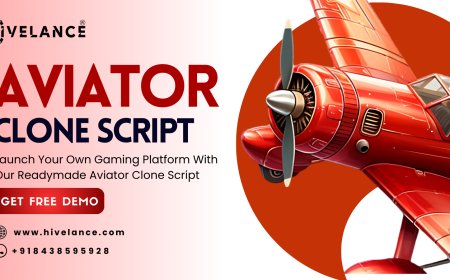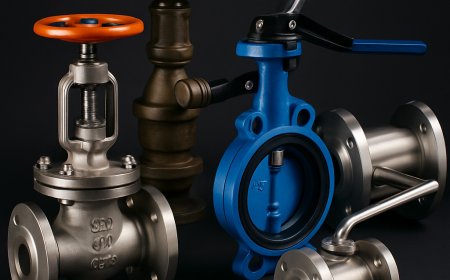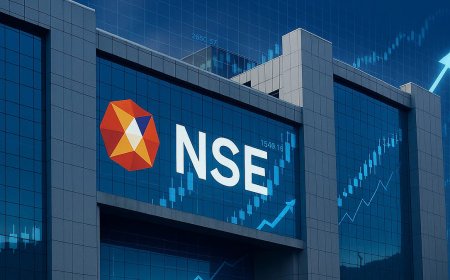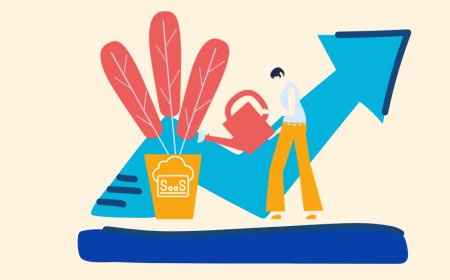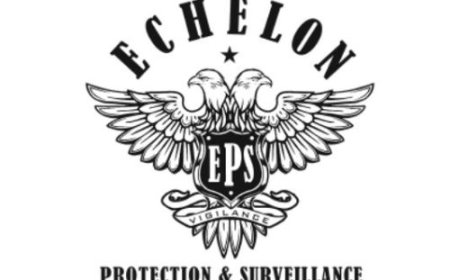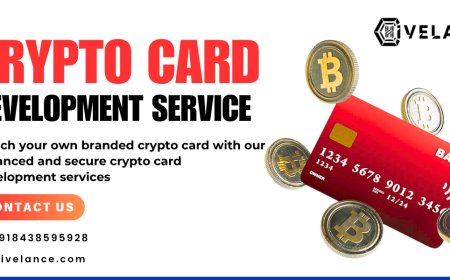Is Rollups-as-a-Service the Future of Scalable Blockchain Deployment?

Blockchain technology has proven itself as a revolutionary innovation capable of transforming industries ranging from finance and healthcare to gaming and logistics. However, one persistent challenge continues to plague the space: scalability. Ethereum, the worlds most used smart contract platform, is often bottlenecked by congestion and high gas fees. Similarly, other Layer 1 networks experience trade-offs between speed, decentralization, and security. This scalability trilemma has spurred countless innovationsfrom Layer 2 protocols to sidechains and sharding.
Among these solutions, rollups have emerged as a frontrunner in addressing the scalability crisis without compromising on decentralization or security. More recently, an evolved version of this conceptRollups-as-a-Service (RaaS)has captured the attention of developers and enterprises alike. By enabling plug-and-play rollup infrastructure for blockchain applications, RaaS platforms are changing how developers think about launching scalable dApps.
This blog explores the rise of Rollups-as-a-Service, its advantages, the current market landscape, and how it may represent the future of scalable blockchain deployment.
What Are Rollups and Why Do They Matter?
To understand the importance of Rollups-as-a-Service, it's vital to grasp the underlying technology. Rollups are Layer 2 scaling solutions that bundle or "roll up" multiple transactions into a single batch, which is then submitted to a Layer 1 blockchain like Ethereum. This process dramatically reduces gas fees and increases throughput while retaining the security guarantees of the underlying chain.
There are two primary types of rollups:Optimistic RollupsandZero-Knowledge (ZK) Rollups. Optimistic Rollups assume transactions are valid and only perform computation if fraud is suspected. In contrast, ZK Rollups use cryptographic proofs to verify the correctness of batched transactions before submission. Each has its trade-offs, but both offer significantly enhanced scalability.
By solving some of the most pressing limitations of Layer 1 blockchains, rollups have become central to the Ethereum roadmap and broader scaling discourse. However, deploying a custom rollup from scratch is technically complex and resource-intensive, which has led to the emergence of RaaS.
The Emergence of Rollups-as-a-Service (RaaS)
Rollups-as-a-Service platforms are designed to abstract away the technical complexities of launching a rollup. They offer developer-friendly tools, APIs, SDKs, and infrastructure to allow projects to deploy customized rollups without needing deep blockchain engineering expertise. RaaS platforms manage everything from data availability to settlement layers, allowing builders to focus on application logic and user experience.
This model has gained traction because it democratizes access to scalable infrastructure. Much like how cloud computing and Infrastructure-as-a-Service (IaaS) enabled the startup boom of the 2010s, RaaS is now lowering the barrier to entry for Web3 projects aiming for scalability and modularity.
Notable platforms in this space include Conduit, AltLayer, Eclipse, Sovereign, and Caldera, each offering a unique blend of tooling, settlement options, and rollup frameworks. Their goal is the same: to make scalable blockchain deployment seamless and developer-first.
Why Rollups-as-a-Service is Gaining Momentum
Several factors are contributing to the rapid adoption of Rollups-as-a-Service. First and foremost is the demand for customized scalability. As applications become more complex and user bases grow, the need for isolated execution environments becomes essential. RaaS platforms provide developers with the ability to buildapp-specific rollups, where the entire rollup can be optimized for a particular use casewhether its DeFi, gaming, or real-world asset tokenization.
Moreover, RaaS enhancesinteroperabilityby enabling native bridging solutions between rollups and the Layer 1 or other rollups. These platforms are also designed to be modular, offering configurable data availability layers (such as Celestia or EigenDA), settlement layers (like Ethereum or other L1s), and execution environments (EVM-compatible or custom WASM VMs).
Another driving force iscost efficiency. By offloading transaction processing from congested Layer 1s, RaaS-based rollups significantly reduce gas costs, making microtransactions viable again. This is particularly important for sectors like gaming or social dApps, where high fees can ruin the user experience.
Finally, institutional interest and enterprise adoption are being propelled by thecompliance and controlthat rollups offer. Enterprises can deploy permissioned rollups tailored to their regulatory needs, with fine-grained control over governance, transaction visibility, and throughputfeatures that are difficult to implement on a public Layer 1.
Technical Architecture Behind RaaS
A Rollups-as-a-Service platform typically includes several core components: an execution environment (such as an EVM or WASM engine), a data availability layer, a proof system (for ZK or fraud proofs), a sequencer, and optionally, a settlement contract on a Layer 1.
Thesequenceris responsible for ordering transactions and producing blocks, while theprover/verifierlayer ensures cryptographic integrity of the data. Some RaaS platforms opt for centralized sequencers initially but allow future upgrades to decentralized or shared sequencing models.
Thedata availabilitylayer is one of the most crucial aspects of RaaS. Without proper data availability, users can't verify the correctness of the rollup state. Solutions like Celestia, Avail, and EigenLayer are designed specifically to offer decentralized data availability guarantees, which can be selected as plug-and-play modules within many RaaS platforms.
Some RaaS providers also offerSDKs and DevOps toolsthat allow for seamless deployment, monitoring, and upgrading of rollups. This level of integration is what makes RaaS so attractive to projects aiming for speed-to-market without sacrificing performance or decentralization.
Real-World Use Cases for RaaS
The flexibility and scalability provided by Rollups-as-a-Service unlock new possibilities for a variety of sectors. InDecentralized Finance (DeFi), RaaS allows for high-throughput, low-latency trading platforms that are not limited by the constraints of congested Layer 1 networks. These rollups can be optimized for specific use cases such as perpetuals, options, or yield aggregation strategies.
Ingaming, app-specific rollups can support millions of microtransactions per day with negligible fees and instant finality. Game studios can also retain sovereignty over their rollup, enabling them to fine-tune game logic, economy models, and even experiment with novel consensus mechanisms.
Forsupply chain and logistics, enterprises can benefit from private or permissioned rollups to maintain data confidentiality while leveraging blockchain immutability. These networks can integrate IoT data, shipment tracking, and compliance checks in real time.
Inidentity and real-world assets, rollups provide a scalable backbone for zero-knowledge proofs, on-chain KYC, and tokenized ownership without bloating Layer 1 networks.
Key Players in the Rollups-as-a-Service Ecosystem
The RaaS landscape is rapidly evolving, with several leading platforms shaping the future of modular blockchain deployment:
-
AltLayer: Offers customizable rollups with built-in interoperability layers and multi-chain support. AltLayer emphasizes the ability to "spawn" temporary rollups for specific events or dApps.
-
Conduit: Aims to abstract infrastructure complexity for developers building on Ethereum. It focuses on developer UX, DevOps tooling, and rapid deployment.
-
Eclipse: Leverages Solana's virtual machine with Ethereum compatibility, providing high throughput and composability across multiple chains.
-
Sovereign: Built around ZK-rollup architecture, Sovereign is focused on building modular and sovereign execution environments using RISC Zero or STARK-based proofs.
-
Caldera: Offers plug-and-play rollups with support for various virtual machines, data layers, and sequencing models.
Each of these players brings unique value propositions and is carving out niches within gaming, enterprise, DeFi, and NFT-focused applications.
Challenges Facing Rollups-as-a-Service
Despite its promise, Rollups-as-a-Service faces several challenges. One major concern issequencer decentralization. Many RaaS platforms rely on centralized sequencers to speed up rollup operations, but this introduces a potential point of failure or censorship. The industry is exploring shared sequencer networks or decentralized coordination mechanisms, but these are still in their infancy.
Interoperability between rollupsis another friction point. While bridging solutions exist, they often suffer from latency and security trade-offs. Ensuring that rollups can talk to each other seamlesslypossibly through shared messaging layers or ZK-proof-based synchronizationis still an ongoing area of researc









